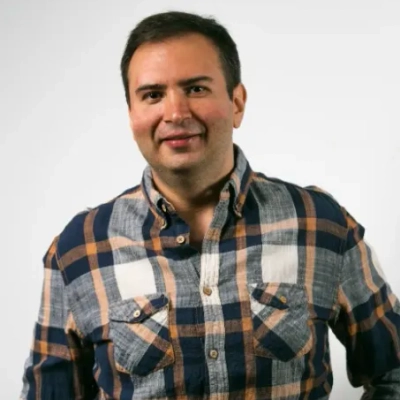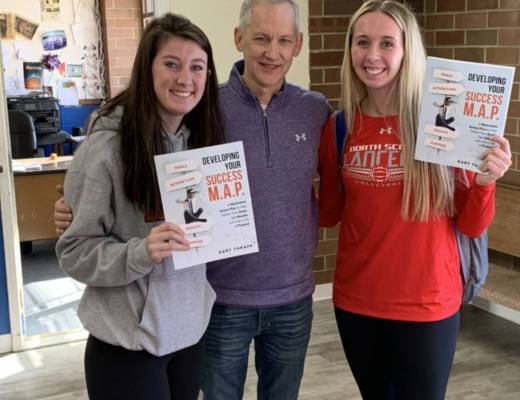Storytelling has emerged as a powerful tool for reinforcing company culture, offering a unique approach to embedding values within organizations. We asked industry experts to share how their company uses storytelling to reinforce its culture and values. Discover how authentic stories can foster a more cohesive and purpose-driven workplace.
- Stories Transform Values into Lived Experiences
- Trust-Based Storytelling Builds Lasting Brand Identity
- Humanizing Legal Victories Through Comprehensive Narratives
- Authentic Stories Shape Organizational Culture
- Failures and Wins Reinforce Cultural Values
- Client-Centric Storytelling Drives Product Development
- Project Moments Illustrate Company Values
- Live Value Recall Embeds Culture Through
- Adventure Diaries Connect Team to Mission
- Crisis Response Exemplifies Patient-First Approach
- Engineer’s Weekend Effort Becomes Cultural Touchstone
- Client Letter Anchors Firm’s Commitment
- Video Series Shares Residents’ Journeys
- Quiet Mentorship Shapes Organizational Culture
- Newsletter Highlights Team’s Community Involvement
15 Techniques to Use Storytelling to Reinforce Company Culture
Stories Transform Values into Lived Experiences
We use stories to turn abstract values into lived experiences. In meetings and newsletters, we highlight real examples of people living our values, not just slogans on the wall. For example, one of our engineers recently discovered a mistake in his code that cost us time and money. Rather than hide it, he told the whole team what happened and what he learned. We praised his honesty and turned it into a story about transparency. At our next all-hands meeting, I shared how his openness allowed us to fix the issue quickly and avoid bigger problems. The story reinforced that it is safe to admit mistakes and that learning is more important than blame. When people hear concrete stories like this, they understand what our culture looks like in action and are inspired to follow suit.
 Chris Dyer
Chris Dyer
Keynote Speaker On Culture, ChrisDyer.com
Trust-Based Storytelling Builds Lasting Brand Identity
After 40+ years in PR and society journalism, I’ve learned that storytelling isn’t just marketing — it’s how you build your entire brand identity. Every piece I write reinforces our core value: providing insider access with wit and discretion.
A perfect example occurred during my early days at Andy Warhol’s Interview magazine. When celebrities would share deeply personal stories off-the-record, I’d always honor that boundary while still crafting compelling narratives. This approach became legendary in our circles—talent knew they could trust us with their truth.
That reputation for discretion paired with sharp storytelling became our calling card. Now, when I cover galas or cultural events, subjects actively seek me out because they know I’ll capture their essence authentically without betraying confidences. This trust has landed me commentary spots on major networks and kept my column thriving for decades.
The business impact is measurable — over 80% of my high-profile sources come through referrals from other celebrities and socialites. In media where access is everything, being known as someone who tells great stories while protecting people has become my ultimate competitive edge.
 R. Couri Hay
R. Couri Hay
Co-Founder, R. Couri Hay Columns
Humanizing Legal Victories Through Comprehensive Narratives
When we win a case, we don’t just post a dollar amount and an attorney headshot. We tell the whole story. We describe who the client was, what they went through, and how this money changed their life. We also highlight who on our team helped make that possible, from the case manager who called every doctor’s office to the records clerk who got documents in under the deadline.
Every settlement announcement becomes a three-part story: a static image post, a blog article, and a short video from the lead attorney. Each piece focuses on the people behind the case, not just the payout. We spread these out over time to give the story room to breathe and land.
Not long ago, we represented a farm ranch worker who was thrown from a trailer and seriously injured. The insurance company tried to brush him off with a $250,000 offer. We dug in, built the case, and fought until we secured $1.25 million for him. Our client bought a home, is getting married, and can start a new chapter of his life. Everyone in our firm helped make that happen, too. That’s the kind of story we want to tell — stories that reflect who we are, what we fight for, and why it matters.
 Yosi Yahoudai
Yosi Yahoudai
Co-Founder & Managing Partner, J&Y Law
Authentic Stories Shape Organizational Culture
Storytelling is an essential part of how we reinforce culture and values. In my experience, stories are most effective when they are rooted in actual challenges and decisions, not in slogans or generalized statements. I have seen that when leadership openly shares the reasoning behind key business moves, it creates a shared understanding and stronger alignment within teams.
I have made it a practice to use real examples from our own journey to illustrate our values, particularly around adaptability, accountability, and knowledge sharing. For instance, during the launch of the ECDMA Global Awards, our team faced significant setbacks with partner alignment and shifting deadlines. Instead of minimizing these issues, I called an all-hands meeting and shared the full story: the strategic imperatives behind our timelines, the missteps in our communication with stakeholders, and the candid lessons learned. I detailed how we course-corrected, redistributed ownership, and ultimately delivered a successful event — not by luck, but by applying our stated values in practice.
This approach had a clear impact. Team members referenced this specific story in subsequent projects, using its lessons to proactively flag risks and clarify expectations with partners. The story became a living example of our culture in action, far more compelling than a generic values statement.
In my consulting work with multinational clients, I advise leadership to anchor their internal communications in similar stories drawn from actual business turning points — especially moments where company values influenced a tough decision. For example, a retail client recently used a detailed account of how their refusal to compromise on customer privacy, even at the expense of short-term marketing gains, shaped their data strategy and built trust with their teams. These stories, told by those who lived them, foster credibility and set clear behavioral standards.
Ultimately, storytelling works when it is specific, transparent, and directly tied to business outcomes. It turns abstract values into practical guideposts for daily behavior and decision-making. That is how we’ve seen culture become something tangible and enduring, rather than a set of words on the wall.
 Eugene Mischenko
Eugene Mischenko
President, E-Commerce & Digital Marketing Association
Failures and Wins Reinforce Cultural Values
Storytelling is not an add-on; it’s our method of passing down what truly matters. Culture and values don’t adhere through memos or all-hands presentations. They stick when people experience them in action, and the most effective way we’ve achieved this is by sharing authentic stories — particularly the messy, in-progress ones.
Here’s an example: every month, we host a “Failures & First Wins” session. It’s an informal, slide-free, open mic-style call where team members share something they attempted, what went awry, and what they learned — or how they transformed it into a small victory. There’s no polishing or pretending it was all part of the plan. Just raw moments that highlight our values in motion: curiosity, accountability, and genuine ownership.
One of the earliest stories came from a team member who launched a campaign that completely flopped. Instead of concealing it, they broke down what didn’t resonate, then shared how they adjusted it to create something better. That story was referenced for months — not because it was about failure, but because it captured what we believe: progress over perfection, and learning openly.
It’s this kind of storytelling — simple, human, and specific — that reinforces who we are far more effectively than a branded statement ever could. Over time, these stories become cultural adhesive. They provide new team members with a blueprint, not just for how we work, but for how we present ourselves. And that ripple effect is what maintains the culture’s authenticity as we grow.
 John Mac
John Mac
Founder, OPENBATT
Client-Centric Storytelling Drives Product Development
Storytelling is huge for us. It’s how we build our culture, guide product decisions, and keep everyone on the same page. We’re big fans of the StoryBrand framework, you know, that classic hero’s journey structure you see in movies like Star Wars. The key insight is that our clients are the heroes of their own stories, not us. We’re more like the wise mentor character who gives them the tools they need to succeed.
This really clicked when we were building our AI editing tools. We could have done what every other tech company does and led with all the technical specs and fancy algorithms. But instead, we started talking to actual marketing teams who were absolutely buried under work. I remember one conversation with this marketing director who was trying to create different versions of the same campaign for like 30 different regions, and she was working until 9 PM every night just to keep up. That story completely shifted how we built the whole feature.
We stopped asking ourselves, “What’s the coolest thing this AI can do?” and started asking, “How do we actually help Sarah get home for dinner with her kids?” Sounds cheesy, but it works. When you’re designing features, it’s so tempting to just pile on more bells and whistles because you can. But if you’re not solving a real problem for real people, you’re basically just building expensive toys. Every decision we make, every feature we ship, it goes back to helping our users actually win at their jobs.
 Raul Reyeszumeta
Raul Reyeszumeta
VP, Product & Design, MarketScale
Project Moments Illustrate Company Values
We use storytelling as a way to make our values tangible. While policies can be forgotten, a compelling story is often remembered.
After each major project, we collect “project moments,” which are brief accounts of instances where someone embodied our values. In a recent meeting, we shared how one developer noticed a client’s workflow issue. Although it wasn’t within our project scope, she took the initiative to build a quick prototype in her own time to assist them. This became a clear example of our value: “Own the outcome.”
We also maintain a “Small Wins & Big Lessons” channel in our team chat. Employees post moments of success or challenges that align with our values. These stories are shared in their own words, without embellishment, which lends them authenticity.
New hires don’t simply read our values; they hear stories about them from their first day. Over time, these stories create a shared language. When someone remarks, “That’s an ‘Own the Outcome’ moment,” everyone understands precisely what it means.
 Vikrant Bhalodia
Vikrant Bhalodia
Head of Marketing & People Ops, WeblineIndia
Live Value Recall Embeds Culture Through
We scale our culture through live value recall, which embeds values into true, personal stories told by team members. Rather than relying on mission statements or slide decks, we put people in a position to tell very specific, unscripted stories about times they had to act on a value under real pressure. These aren’t filtered or pre-rehearsed stories. They’re raw, they’re often imperfect, and they’re profoundly human, which is why I think they resonate.
Each quarter, I host a session in which team members walk us through one of these moments. When a strategist told the story of how they declined a lucrative client to maintain transparency in data reporting, that story became a cultural touchstone, something we refer to when navigating gray areas of integrity.
This practice definitely promotes alignment and trust at a speed that no policy ever could. I’ve seen the team’s perception of values sharpen over time. Indeed, feedback post-implementation saw a significant increase in employees who believed we were “practicing what we preach”. The secret here is repetition and relevance, presenting stories associated with contemporary challenges to people regularly enough for the values to become more than just ideas. They become “remembered” actions.
 Jonathan Garini
Jonathan Garini
Founder & CEO | Enterprise AI Strategist, fifthelement
Adventure Diaries Connect Team to Mission
We tell the story of our culture.
Developers, guides, writers, marketers… A diverse team with a common love of travel and authentic experiences, on a mission to promote local community benefits. The stories we share — from the boardroom and from the road — are a cultural anchor: they ensure everything we do puts our values first.
These include sessions like our internal “Adventure Diaries.” Once a month, one of the team members shares with us a trip they recently took — anything from a big journey abroad to just a long weekend wandering around an unknown part of their own city.
One member may tell the story of how talking to a street vendor in Puerto Escondido led to the idea for a new set tour, while another may play a video that shows the character of an artisan they met in Rome. Not only are these storylines entertaining, but they also help inform how we create experiences, select partners, and speak with travelers.
So, as we share and listen to these narratives here, it is just one of the many ways that our work is never about selling tours; it is about connecting with other humans, preserving cultures, and ensuring everything we touch will be left in a better state when we travel.
 Alex Veka
Alex Veka
Founder, Vibe Adventures
Crisis Response Exemplifies Patient-First Approach
One that sticks is from the early pandemic days. A small rural clinic’s EHR went down just as patient load spiked. Our team worked overnight, not because anyone told them to, but because they knew lives were on the line. We turned that into an internal story, retelling it in meetings and onboarding sessions to show what patient-first really means.
It wasn’t just a feel-good moment. Over the next year, employee engagement scores rose 18%, and customer referrals increased by 22%. People started making decisions that aligned with that story without needing extra approval.
Advice: You don’t need grand speeches. Find a moment where your team lives your values under pressure. Tell it often, keep it specific, and make people in the story the heroes. That way, values stop being posters on a wall and start being habits.
 John Russo
John Russo
VP of Healthcare Technology Solutions, OSP Labs
Engineer’s Weekend Effort Becomes Cultural Touchstone
We find storytelling to be a closed loop. It’s not meant to be inspirational, but to demonstrate what is actually taking place on the ground as an indication of who we are.
One of our engineers actually spent an entire weekend debugging a recursion problem for one of our users. There was no one to guide them. It wasn’t even listed on the sprint board. The student had written that he felt he would never understand recursion, and the engineer interpreted that as a personal statement because he, too, had felt that way years earlier.
This tale entered the company lingo: “to pull a Max.” It underscored the idea that we are obsessed with the outcomes of the students, which is not a matter we discuss in town halls. It is part of what we do, and more often than not, invisibly. What we share is reflected in retrospectives, Slack threads, and even during onboarding since they underpin what is more important than a mission statement.
Stories travel faster than policies; hence, culture changes more through stories. This is especially true when they happen to be authentic and nobody is trying to make them popular.
 Mircea Dima
Mircea Dima
CTO / Software Engineer, AlgoCademy
Client Letter Anchors Firm’s Commitment
Storytelling is essential to reinforcing our culture of advocacy, empathy, and justice. We regularly share case stories, respecting confidentiality, of course, that highlight moments where our team went beyond the legal brief to truly support a client through a crisis. These stories aren’t shared for marketing purposes, but internally, to remind ourselves why we do the work. They give our attorneys, paralegals, and staff a chance to see the impact of their work beyond the courtroom or negotiation table.
One story that has stuck with our team involved a client who faced disability discrimination and had almost given up hope. One of our attorneys spent weeks patiently guiding her through the legal process, ultimately helping her secure justice and a fair settlement. Afterward, the client wrote a letter, not about the money, but about how she finally felt heard. That letter is something we shared in a team meeting and return to often because it reinforces our value of treating each client with dignity, not just as a legal case. Stories like that shape our internal conversations and keep our values grounded in real-world impact.
 Ed Hones
Ed Hones
Attorney at Law, Hones Law Employment Lawyers PLLC
Video Series Shares Residents’ Journeys
We use storytelling to reinforce our culture and values and embody the compassion and dignity we want our community to feel. It’s not just something we talk about in our marketing, but an approach we take in shaping our entire offering and services. The clearest example of this is our “Celebrating You” video series.
“Celebrating You” is our long-running initiative aimed at sharing real stories from people in our care communities — residents, family members, and team members — that we’ve posted on our YouTube channel and reshared on our website and Facebook. In one episode, for example, we follow the story of Grace, a woman who lost her husband unexpectedly and eventually moved into aged care. As she shares her story with us, and that of her daughter Sheridan, we are taken on a journey of vulnerability, but also of healing. What made this kind of storytelling work for us is that people can see themselves in it; they relate to having to make difficult choices, figure things out, and start again.
 Jesse Gramenz
Jesse Gramenz
Digital Marketing Manager, St Vincent’s Care
Quiet Mentorship Shapes Organizational Culture
We don’t talk much about “values” — not because we don’t have them, but because they’ve always been lived, not printed.
I’ve grown within this company — from early projects to the team we’ve built today — and one thing has remained consistent: our culture is passed on through people, not policies.
Some of our teammates have been here since day one. Others bring over a decade of experience in tech. But what unites them isn’t just seniority — it’s how naturally they share their way of working.
When someone new joins, they quickly notice: advice is offered early, context is never held back, and even the tricky parts of working with long-term clients come with background, nuance, and support.
That’s the kind of storytelling I value most as a CEO. Not the kind you craft — the kind you carry, and quietly pass on.
 Konstantin Yalovik
Konstantin Yalovik
CEO, launchOptions
Newsletter Highlights Team’s Community Involvement
We have a close-knit team, almost like a family — that’s because we recruit for attitude, personality, and approach as much as we do for skills and experience. We also care deeply about our local community.
Here’s one of the ways we use storytelling to reinforce these values, with specific references to our latest newsletter:
As part of our digital marketing efforts, we publish a monthly email newsletter (also available as a blog on our website). This serves as a monthly round-up as well as a digest of the blogs and videos we have published, plus the topics we’ve covered, over the course of that month.
At the same time, our monthly newsletter is also a place where we continue to share the company’s ongoing story. In July 2025, we wrote about how Diana has been helping her daughter prepare for her Food Tech exam at school and how putting family first is paramount to her.
Also in July, we spoke about how most of our team members took part in the Midnight Walk for St Luke’s Hospice, an annual charity event which aims to raise donations for the city of Plymouth.
 Diana Crabtree
Diana Crabtree
Managing Director, Web Design and SEO Company Limited
 Chris Dyer
Keynote Speaker On Culture, ChrisDyer.com
Chris Dyer
Keynote Speaker On Culture, ChrisDyer.com
 R. Couri Hay
Co-Founder, R. Couri Hay Columns
R. Couri Hay
Co-Founder, R. Couri Hay Columns
 Yosi Yahoudai
Co-Founder & Managing Partner, J&Y Law
Yosi Yahoudai
Co-Founder & Managing Partner, J&Y Law
 Eugene Mischenko
President, E-Commerce & Digital Marketing Association
Eugene Mischenko
President, E-Commerce & Digital Marketing Association
 John Mac
Founder, OPENBATT
John Mac
Founder, OPENBATT
 Raul Reyeszumeta
VP, Product & Design, MarketScale
Raul Reyeszumeta
VP, Product & Design, MarketScale
 Vikrant Bhalodia
Head of Marketing & People Ops, WeblineIndia
Vikrant Bhalodia
Head of Marketing & People Ops, WeblineIndia
 Jonathan Garini
Founder & CEO | Enterprise AI Strategist, fifthelement
Jonathan Garini
Founder & CEO | Enterprise AI Strategist, fifthelement
 Alex Veka
Founder, Vibe Adventures
Alex Veka
Founder, Vibe Adventures
 John Russo
VP of Healthcare Technology Solutions, OSP Labs
John Russo
VP of Healthcare Technology Solutions, OSP Labs
 Mircea Dima
CTO / Software Engineer, AlgoCademy
Mircea Dima
CTO / Software Engineer, AlgoCademy
 Ed Hones
Attorney at Law, Hones Law Employment Lawyers PLLC
Ed Hones
Attorney at Law, Hones Law Employment Lawyers PLLC
 Jesse Gramenz
Digital Marketing Manager, St Vincent’s Care
Jesse Gramenz
Digital Marketing Manager, St Vincent’s Care
 Konstantin Yalovik
CEO, launchOptions
Konstantin Yalovik
CEO, launchOptions
 Diana Crabtree
Managing Director, Web Design and SEO Company Limited
Diana Crabtree
Managing Director, Web Design and SEO Company Limited







